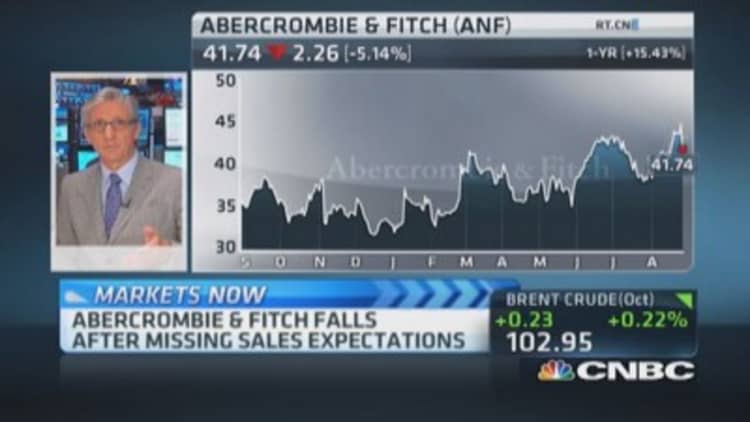It's the biggest complaint of the trading community this year: where has all the volume gone?
This goes beyond the "seasonally slow" trading that we see during the summer months. Stock volumes have been lousy since April, continuing a pattern that has been declining for years. So has volatility: with the exception of a brief spike during the Flash Crash in May 2010 and the European debt turmoil of 2010—2011, flows have been on a steady decline for five years.
It's not just stocks: volumes for bonds and currencies have dropped as well.
What's going on? There are several explanations:

1) Heavy regulation is driving out market participants. Dodd-Frank regulation has dramatically shrunk proprietary trading desks at banks (many have closed), and that means less trading;
2) The slow but steady rise of Exchanged Traded Funds (ETFs), now moving toward $2 trillion in assets in the U.S. That's about a tenth of the size of the mutual fund industry, and many active traders now routinely used ETFs to get in and out of trading positions. That's important, because although such trading generates volume in the fund, it does not translate into higher flows in the stocks underlying most of these instruments, which are mostly based on indexes.
Take the largest ETF, the , which tracks the S&P 500 Index. To create these shares, brokers (they're called Authorized Participants) buy the stocks underlying the S&P 500, then create shares in the fund. But once those shares start trading among the investing public, the 500 stocks underlying the ETF are not bought or sold when the shares change hands. You only get activity in the underlying shares when the Authorized Participants creates or redeems shares in exchange for the underlying stocks.
3) Low volatility has reduced involvement of high frequency trading (HFT) firms that generally benefit from higher volatility. As price swings have dropped, the profitability and the trading activity of HFTs has declined as well.
All that said, I think the most compelling explanation for the decline is that in the last decade, volume activity has been distorted by the move to electronic trading, as well as by the 2008 financial crisis.
The move to electronic trading, which began in earnest around 2003 and rose dramatically through 2008, helped create the HFT industry—and a huge increase in trading volume. Of course, the crisis itself caused a massive spike in volatility and trading volume as well.
Beginning in 2010, however, volumes beat a steady retreat. This makes sense, because as the financial crisis began to abate, volatility declined, which cut trading opportunities. High frequency trading became more widespread, which also reduced trading opportunities. If this is accurate, then the volume run-up from 2003 to 2008 financial crisis is actually the outlier, rather than the low volume we see now.
I'll give you an example: in January 2004, average daily volume at the NYSE was about 2 billion shares (as an aside, during the financial crisis there were days when we were over 2.6 billion shares). It began rising notably in 2005, rising over 3.0 billion in 2007. In October 2008 at the height of the financial crisis, it was over 7.0 billion.
After that water-mark, volume began dropping, with the exception of a few months when the European crisis drove trading spikes. In May 2011, flows were down to 3.8 billion. Yesterday, total volume (all trading in all NYSE listed stocks) was a mere 2.3 billion.
What are the implications? Low volume is partly driven by low volatility, and it makes it difficult for the Volatility Index to rise. When volume is low, you can't string together enough big up days to get a significant correction in the VIX. Sure, you could get a spike to 25 briefly (it's below 12 now), but it would take a lot to keep it there for any period of time.
It would take a prolonged crisis, which the odds are against despite some who think otherwise. I pick 25 because that is a sort of minimum number at which we might generate significantly higher volume for a time.
The bottom line: lower volatility may be a longer term phenomenon, unless we get a serious financial panic all over again.
--By CNBC's Bob Pisani


